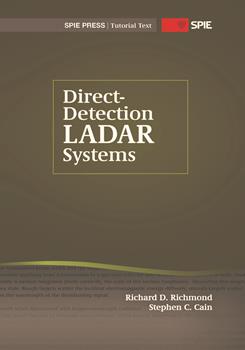|
This chapter presents techniques for processing LADAR data to accomplish the tasks of detection and range estimation. Section 4.1 introduces the theory of Bayesian reasoning for making an optimal detection decision from a single photocount measurement. The decision process requires criteria for making the decision, which is discussed in Sec. 4.2. Section 4.3 covers methods of detecting targets from a collection of measurements or a waveform. Section 4.4 describes a method for comparing the performance of different LADAR target detectors known as the receiver operating characteristic. Finally, Sec. 4.5 discusses range estimation algorithms. 4.1 Simple Binary Hypothesis Testing Many LADAR applications involve the detection of a target in air or space. In these cases, the laser pulse is transmitted upward into the sky and the receiver waits for a signal to return to determine if a target is present. This scenario is known as the simple binary hypothesis problem, because at any time there are two possible conclusions from the signal measured by the receiver. The first possibility is that a target is present, and the second possibility is that no target is present. If a signal is present, it may not be detectable, given the noise that is also present in the measurement. The probability mass function (PMF) of the number of photoelectrons in the measurement D is denoted as P(D|H1), where H1 denotes hypothesis number one, in which the target is present. When the signal in its raw form (no data processing) is present and amplified by an APD, the noise will usually be dominated by laser speckle and photon noise. |
|
|


